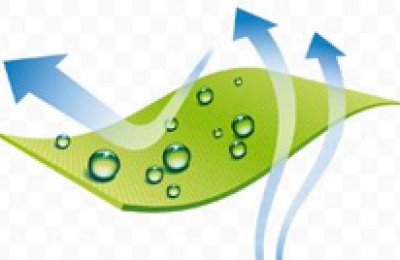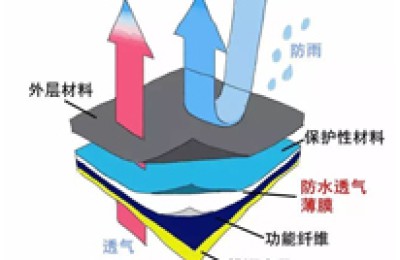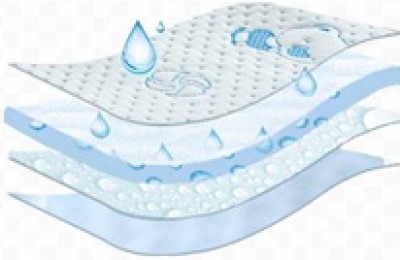According to the official website of the Ministry of Commerce of China, the ongoing bilateral free trade negotiations between Vietnam and the European Union are expected to reach an agreement in June this year. At the same time, Vietnam is also participating in TPP negotiations.
The reporter learned from a comprehensive interview that Vietnam’s exports of European and American products compete with China, and Vietnam has a relatively low-cost advantage. The free trade negotiations between Vietnam and the EU will make exports tax-free and thus superimpose the advantages, which is bound to have an impact on China’s low-end manufacturing industry. But “continuing to compete with countries such as Vietnam in low-end manufacturing is unrealistic and goes against the direction of upgrading.” Kuang Xianming, deputy director of the Public Policy Institute of the China (Hainan) Reform and Development Institute, said in an interview with a Nandu reporter, ” The pressure faced by China’s manufacturing industry is not caused by Vietnam, but more problems that need to be solved in the transformation and upgrading of its own economic structure.”
Vietnam speeds up TPP negotiations
According to the official website of the Ministry of Commerce of China, the Vietnam Economic Times reported on April 9: Bernd Lange, Chairman of the International Trade Committee of the European Parliament, said on April 8 that Vietnam and the EU are discussing important aspects of free trade negotiations. Negotiations are underway and an agreement is expected to be reached in June this year. In addition, Vietnam is also accelerating its participation in TPP negotiations, saying it is expected to be signed in 2015. According to Vietnam’s “Investment News”, after the signing of the TPP, tariffs on some goods, including textiles, will be reduced from the current 17-25% to zero tariffs. Vietnamese companies will be more competitive, and Vietnam will usher in a second investment boom. .
Vietnam’s official statistics show that in terms of export markets, the EU is Vietnam’s largest export market. Vietnam’s exports to the EU in March this year were US$6.92 billion. Vietnam’s main export products to the EU include various telephones and their parts, shoes categories, textiles and garments, electronic products, computers and their parts. Followed by the United States, with exports of US$6.9 billion in March this year.
In 2013, the EU was Vietnam’s second largest trading partner, with a bilateral trade volume of 24.2 billion euros. The EU was also Vietnam’s largest export market. Vietnam’s exports to Europe were 21 billion euros, accounting for 19% of Vietnam’s total exports. The EU is also one of Vietnam’s main sources of foreign investment.
In recent years, Vietnam has undertaken the transfer of many Chinese manufacturing industries due to its relatively low labor and production costs. During the Spring Festival of 2015, many foreign-funded companies such as Citizen also relocated their factories to Vietnam. With the signing of a free trade agreement between Vietnam and the EU, most of Vietnam’s products exported to the EU will be tax-free or tax-reduced, and the price competitiveness of its export products will become more prominent. China and the EU have not yet started negotiating a free trade agreement and are still in the discussion stage.
“In the past, Vietnam posed little threat to China’s manufacturing industry, but now Vietnam and China’s industries are increasingly forming homogeneous competition. Vietnam’s signing of a free trade agreement with the EU and the signing of the TPP will superimpose its advantages and have a greater impact on China’s manufacturing industry. The impact is worthy of attention.” Bai Ming, deputy director of the International Market Research Department of the Ministry of Commerce, said in an interview with Nandu reporters that the types of products Vietnam exports to Europe and the United States have a high degree of overlap with China’s main exports to Europe and the United States, and have cost advantages. Vietnam’s policies The degree of openness is relatively large, and the business environment is also constantly improving. Once exports to Europe and the United States are tax-free, it will have a greater impact on China’s exports.
Kuang Xianming, deputy director of the Public Policy Institute of the China (Hainan) Institute of Reform and Development, was interviewed by a Nandu reporter and believed that Vietnam’s signing of a free trade agreement with the EU and the TPP with the United States will put greater pressure on China’s low-end export industries. In textile, clothing and other industries, Vietnam will have a greater cost advantage than China. Vietnam’s share of the market share of mid- to low-end industrial products in the European and American markets will gradually increase.
China’s manufacturing industry should focus on upgrading
Kuang Xianming believes that continuing to compete with countries such as Vietnam in low-end manufacturing is unrealistic and runs counter to the direction of upgrading. “Objectively speaking, this impact will not have a huge impact on China’s own economy. The pressure faced by China, including the pressure faced by the manufacturing industry, is not brought by Vietnam, but more needs to be solved during the transformation and upgrading of its own economic structure. problem.”
He said that for China, to cope with this impact, the focus is to accelerate the transformation and upgrading of industries. The key is to speed up the process of opening up the service industry, promote the development of the service industry, especially the development of producer services, and form new competitive advantages. On the other hand, the focus is to seize the opportunity of the “Belt and Road Initiative” to form a larger market scope and strive to expand the space for my country’s economic development.
“For now, China’s manufacturing industry is a bit stuck. Vietnam has factor cost advantages, Europe and the United States have technological advantages. We are in the middle, so we hope to give full play to our comprehensive advantages, just like a medley in swimming.” Bai Ming said , right now we can first focus on the mid-range market, which not only has certain technical content, but also has certain price competitiveness.
Regarding the impact on Vietnam’s manufacturing industry, Bai Ming believes that there is no need to worry too much. “Vietnam’s labor efficiency is far inferior to that of China.” He said that if efficiency is not improved and the cost advantage is relied upon alone, it will not be sustainable.
Xu Hong, chairman of Foshan Carolina Furniture Co., Ltd., also revealed in an interview with Nandu reporters that many colleagues in the furniture industry have changed their positions in recent years, “either to Bangladesh or Africa.”�Because it is close to Europe. There are also people who go to Vietnam, but there are not many good reviews. Most of the comments are that Vietnamese workers are lazy, and most of the rural areas in Vietnam are women working and men not working, which is equivalent to only half of the rural labor force participating in the work. In addition, Vietnam has conflicts between the north and the south and the situation is unstable. “
As far as exports are concerned, Xu Hong revealed that taking furniture as an example, now we no longer look at the price advantage, but at whether the product is in line with the market. Companies each have their own unique skills. What they do well is very good, and what they do poorly is very poor. They are polarized. For example, there is a company that used to do OEM business, but now after receiving low-interest government loans, it directly goes to Europe to open stores for direct sales, and the results are remarkable.
Vietnam-EU free trade area may be completed, impacting my country’s low-end manufacturing exports
According to the official website of the Ministry of Commerce of China, the ongoing bilateral free trade negotiations between Vietnam and the European Union are expected to reach an agreement in June this year.…
This article is from the Internet, does not represent Composite Fabric,bonded Fabric,Lamination Fabric position, reproduced please specify the source.https://www.yjtextile.com/archives/12302



